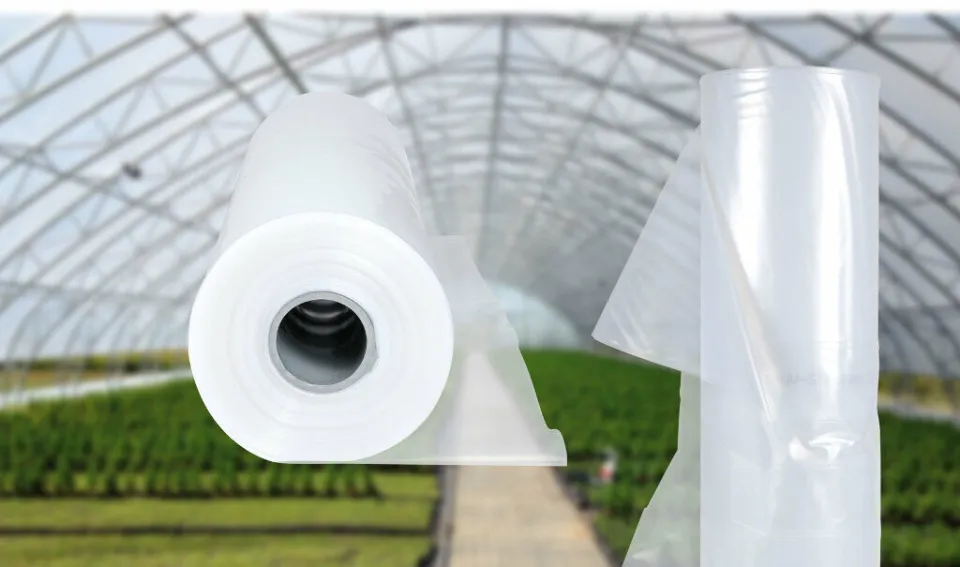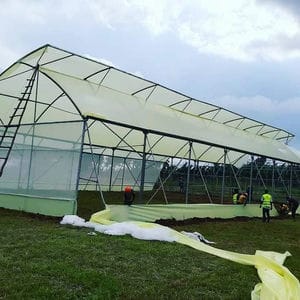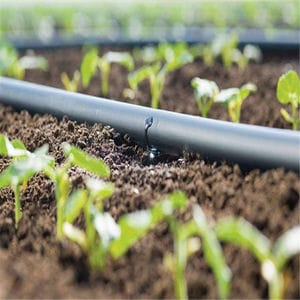 |
| wooden greenhouse in Kenya |
What Is a Wooden Greenhouse in Kenya?
A wooden greenhouse in Kenya is a farming structure built with locally treated timber and covered in UV-stabilized polythene. It creates a controlled environment ideal for crop production in all seasons. Wooden greenhouses are perfect for smallholder farmers or those starting greenhouse farming on a budget.
Benefits of a Wooden Greenhouse in Kenya
-
Low-cost startup compared to metallic greenhouses
-
Easy to construct using local timber and labor
-
Suitable for all agro-climatic zones in Kenya
-
Great insulation for optimal temperature control
-
Customizable sizes to match your budget and land
Low-cost startup compared to metallic greenhouses
Easy to construct using local timber and labor
Suitable for all agro-climatic zones in Kenya
Great insulation for optimal temperature control
Customizable sizes to match your budget and land
Materials Used in Wooden Greenhouses
Every Hortitechno wooden greenhouse is built using durable, high-quality materials. Here is what goes into each structure:
Frame Materials:
-
Pressure-treated timber poles (3–6 inch diameter)
-
Cross beams and braces (for strength and wind resistance)
-
Nails, binding wire, and fasteners
Pressure-treated timber poles (3–6 inch diameter)
Cross beams and braces (for strength and wind resistance)
Nails, binding wire, and fasteners
Covering Materials:
-
UV-stabilized 200-micron greenhouse polythene sheet
-
Insect-proof side netting for ventilation
UV-stabilized 200-micron greenhouse polythene sheet
Insect-proof side netting for ventilation
Internal Accessories:
-
Drip irrigation lines and fittings
-
Crop support strings or wires
-
Roll-up side mechanisms with manual handles
-
Lockable metallic or wooden door
-
Optional entry porch for hygiene control
Drip irrigation lines and fittings
Crop support strings or wires
Roll-up side mechanisms with manual handles
Lockable metallic or wooden door
Optional entry porch for hygiene control
How to Make a Wooden Greenhouse in Kenya
Building a wooden greenhouse requires planning, materials, and basic tools. Here is a step-by-step process:
1. Site Selection
Choose a flat, well-drained area with maximum sunlight exposure (preferably north-south orientation).
2. Marking and Excavation
Mark the corners of your greenhouse according to your desired size (e.g., 8 x 15m). Dig holes about 2 feet deep for the posts.
3. Frame Assembly
Erect the timber posts in the holes and reinforce them with ballast and cement. Connect rafters, crossbeams, and purlins to form the skeleton.
4. Install Netting and Polythene
Staple or nail the insect netting on the side walls. Stretch and fix the polythene cover over the roof and upper side walls.
5. Fit the Drip Kit and Crop Support
Install drip lines along each bed. Set up support wires or strings for crops like tomatoes or capsicum.
6. Final Touches
Install the door, ventilation roll-ups, and any optional fittings like a tank stand or porch. Clean up the area and prepare for planting.
Wooden Greenhouse Prices in Kenya
The wooden greenhouse prices in Kenya depend on the size, features, location, and whether installation and irrigation kits are included.
Greenhouse Size (m)
Capacity (Plants)
Price Range (KES)
Includes
6 x 15
300–500
60,000 – 100,000
Basic structure, UV polythene, side netting
8 x 15
500–600
120,000 – 150,000
Drip kit, crop support, door, ventilation
8 x 24
800–1000
170,000 – 200,000
Irrigation, polythene, porch, 2000L tank optional
8 x 30
1000–1500
220,000 – 280,000
Full installation, crop support, agronomy training
Prices may vary based on your county, delivery fees, and accessories like tanks and insect nets.
What Does a Hortitechno Wooden Greenhouse Come With?
Every Hortitechno wooden greenhouse kit includes:
-
Treated timber frame and structure
-
200-micron greenhouse polythene
-
Insect netting for ventilation
-
Lockable door and entry porch (where applicable)
-
Drip irrigation kit with fittings
-
Crop support system
-
Site installation by trained technicians
-
Agronomic training and after-sale support
Optional upgrades include a 1,000–2,000L water tank, tank stand, seedling trays, and greenhouse management guides.
Treated timber frame and structure
200-micron greenhouse polythene
Insect netting for ventilation
Lockable door and entry porch (where applicable)
Drip irrigation kit with fittings
Crop support system
Site installation by trained technicians
Agronomic training and after-sale support
Types of Greenhouses in Kenya
Understanding the types of greenhouses in Kenya helps farmers make better investment decisions.
Common Greenhouse Options:
-
Wooden Greenhouse – Affordable, ideal for entry-level farmers
-
Galvanized Metallic Greenhouse – Durable, ideal for commercial scale
-
Tunnel Greenhouse – Budget option using PVC or hoops
-
KARI Greenhouse Kenya – Developed by Kenya Agricultural Research Institute for low-budget farmers
-
Ventilated Greenhouse – Designed with vents to regulate temperature and humidity
Wooden Greenhouse – Affordable, ideal for entry-level farmers
Galvanized Metallic Greenhouse – Durable, ideal for commercial scale
Tunnel Greenhouse – Budget option using PVC or hoops
KARI Greenhouse Kenya – Developed by Kenya Agricultural Research Institute for low-budget farmers
Ventilated Greenhouse – Designed with vents to regulate temperature and humidity
Wooden vs. Metallic Greenhouse: Which Is Better?
Feature
Wooden Greenhouse
Metallic Greenhouse
Initial Cost
Lower
Higher
Durability
3–5 years (treated wood)
10–15 years (galvanized steel)
Maintenance
Requires wood treatment
Minimal, rust prevention required
Installation Time
Faster
Slightly longer
Ideal User
Beginners, budget-conscious
Commercial farmers, institutions
Tip: Start with a wooden greenhouse, then expand with metallic frames as your agribusiness grows.
Low Cost Greenhouse Construction in Kenya
Want to reduce expenses? Follow these tips for low cost greenhouse construction in Kenya:
-
Use local timber (e.g., Grevillea, Blue Gum) treated for pests
-
Follow KARI greenhouse designs (6m x 15m for about Ksh 60,000)
-
Pick a level site with sun exposure and drainage
-
Install drip irrigation manually at first; automate later
-
DIY simple tasks like painting or base digging
Hortitechno provides training and construction support for farmers who want to build their greenhouses affordably.
Use local timber (e.g., Grevillea, Blue Gum) treated for pests
Follow KARI greenhouse designs (6m x 15m for about Ksh 60,000)
Pick a level site with sun exposure and drainage
Install drip irrigation manually at first; automate later
DIY simple tasks like painting or base digging
Used Greenhouses for Sale in Kenya: Worth It?
Searching for used greenhouses for sale in Kenya? Here’s what you need to consider:
Pros:
-
Lower upfront cost
-
Faster setup if parts are complete
Lower upfront cost
Faster setup if parts are complete
Cons:
-
Possible damage to structure or cover
-
Transport and reinstallation costs
-
No warranty or after-sales support
Advice: If you're buying used, have a technician inspect the materials. Or, opt for a new wooden greenhouse in Kenya from Hortitechno for full warranty and guidance.
Possible damage to structure or cover
Transport and reinstallation costs
No warranty or after-sales support
Greenhouse Sizes and Prices: Choosing What Fits
Selecting the right greenhouse sizes and prices depends on your land, crop type, and budget.
Farmer Type
Recommended Size
Expected Yield (Tomatoes)
Approx. Cost (KES)
Beginner
6 x 15 m
3–5 tons/season
80,000–100,000
Intermediate
8 x 24 m
7–9 tons/season
180,000–200,000
Commercial Farmer
8 x 30 m
10–15 tons/season
220,000–280,000
Greenhouse Price in Kenya: Market Trends
The greenhouse price in Kenya is influenced by:
-
Location and transport distance
-
Quality of materials (e.g., timber vs. steel)
-
Included components (drip irrigation, tank, netting)
-
Market demand and supply
While Amiran Kenya greenhouse prices remain on the higher end, local companies like Hortitechno Greenhouses offer budget-friendly packages with equal or better support.
Location and transport distance
Quality of materials (e.g., timber vs. steel)
Included components (drip irrigation, tank, netting)
Market demand and supply
Where to Buy a Wooden Greenhouse in Kenya
Trust your greenhouse project to a reputable supplier. Here’s why Hortitechno is the preferred choice:
Hortitechno Greenhouses Offers:
-
Locally sourced, treated timber frames
-
Quick installation (3–5 days average)
-
Complete kits with drip irrigation and crop support
-
Agronomic support for tomatoes, capsicum, herbs, and more
-
After-sales service and free consultations
Visit our website to explore full packages.
Locally sourced, treated timber frames
Quick installation (3–5 days average)
Complete kits with drip irrigation and crop support
Agronomic support for tomatoes, capsicum, herbs, and more
After-sales service and free consultations
Buyer Guide: Questions to Ask Before Buying
Before investing in a wooden greenhouse in Kenya, ask these critical questions:
-
Is the wood treated for termites and rot?
-
Does the price include installation and irrigation?
-
What crops do well in this structure?
-
Are there success stories from other farmers?
-
Can you deliver and build in my county?
-
Is the polythene UV-resistant (200 microns preferred)?
Is the wood treated for termites and rot?
Does the price include installation and irrigation?
What crops do well in this structure?
Are there success stories from other farmers?
Can you deliver and build in my county?
Is the polythene UV-resistant (200 microns preferred)?
FAQs on Wooden Greenhouse in Kenya
Q1. How long does a wooden greenhouse last?
A: 3 to 5 years with proper timber treatment and maintenance.
Q2. What crops can I grow?
A: Tomatoes, capsicum, cucumber, strawberries, basil, spinach, and lettuce.
Q3. Can I install it myself?
A: Yes, but for best results, Hortitechno offers professional setup.
Q4. What is included in a full kit?
A: Wooden frame, polythene, insect netting, irrigation, crop support, entry door, and training.
Q5. Are financing options available?
A: Hortitechno offers staged payments and can advise on SACCO or microfinance options.
A wooden greenhouse in Kenya is the smart farmer's gateway to sustainable agribusiness. With affordable startup costs, fast installation, and excellent yields, there’s no better time to start.
-
Visit: www.kenyagreenhouse.com
-
Call/WhatsApp: +254 723 053 026
-
Email: info@hortitechnogreenhouse.com
Hortitechno Greenhouses – Affordable, Professional, Nationwide.
Visit: www.kenyagreenhouse.com
Call/WhatsApp: +254 723 053 026
Email: info@hortitechnogreenhouse.com



.png)


 20%
20%


